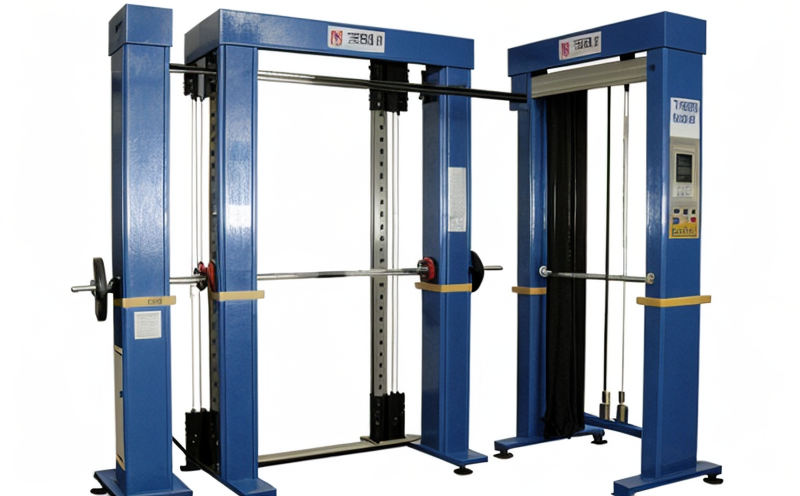AATCC 135 Dimensional changes of fabrics after laundering
The AATCC Test Method 135 assesses dimensional changes in fabrics following a specified laundering process. This test is crucial for quality managers, compliance officers, and R&D engineers to ensure that textiles meet consumer expectations regarding durability and performance post-laundering.
Dimensional stability is a critical factor in the textile industry as it affects fabric shrinkage and garment fit. AATCC 135 provides a standardized method to determine how fabrics behave under controlled laundering conditions, ensuring consistency across different batches of material or production runs. The test helps manufacturers identify any potential issues early on, allowing for necessary adjustments before product release.
During the testing process, samples are subjected to a series of washing and drying cycles according to specified parameters. These parameters include water temperature, detergent type, rinse cycle duration, and dryer settings. After each cycle, measurements are taken to record changes in dimensions such as length, width, and thickness. The difference between initial and final dimensions provides insight into the dimensional stability of the fabric.
The methodology described by AATCC 135 is essential for several reasons:
- To comply with international standards and regulations
- To ensure consistent quality across production batches
- To identify potential issues early in the development process
- To maintain consumer satisfaction by meeting expectations regarding fit and appearance after laundering.
Understanding these parameters allows textile companies to make informed decisions about fabric selection, processing techniques, and final product design. By adhering to this standard, manufacturers can enhance their reputation for quality while also reducing waste associated with rework or recall of products that do not meet dimensional stability criteria.
The results from AATCC 135 are typically reported as percentage changes in dimensions before and after the laundering process. These values help fabric developers optimize their formulations to achieve desired outcomes regarding shrinkage control. For instance, adding more elastic components can increase flexibility but may also contribute to increased stretching over time.
It's important for textile professionals to understand not just what AATCC 135 measures but also its implications in real-world applications. Compliance with this standard ensures that fabrics perform predictably across various environments and user behaviors, contributing significantly to the overall success of a product lifecycle.
Why It Matters
The importance of AATCC 135 cannot be overstated, particularly for weavers involved in the production of textiles destined for consumer goods. Fabric shrinkage and dimensional instability can lead to significant quality issues if left unaddressed. Consumers expect their garments to maintain their original size and shape after repeated washings without losing aesthetic appeal or functionality.
Dimensional stability is especially critical when dealing with woven fabrics, which are often subjected to high stress during manufacturing processes like cutting, sewing, and finishing. If these stresses aren't properly managed, they could result in irreversible damage that affects the final product's performance post-laundering. Therefore, understanding how to control and measure dimensional changes through rigorous testing is paramount.
Accurate measurement of dimensional changes helps textile manufacturers identify problem areas within their production lines early on. By implementing corrective measures based on test results, they can prevent costly errors downstream in the supply chain. Additionally, compliance with industry standards like AATCC 135 enhances brand reputation and builds trust among consumers who value reliability and quality.
For R&D engineers tasked with developing new fabric blends or improving existing ones, this test offers valuable insights into material behavior under stress. Armed with knowledge gained from such testing, they can experiment more effectively, focusing on areas where improvements would yield the greatest benefits without compromising other desirable properties like strength or comfort.
Why Choose This Test
- Ensures compliance with industry standards and regulations
- Provides precise, repeatable results for consistent quality control
- Identifies potential issues early in the development process to minimize costly rework or recalls
- Supports informed decision-making regarding fabric selection and processing techniques
- Promotes brand reputation by meeting consumer expectations for product performance post-laundering
- Aids R&D efforts aimed at improving fabric stability through scientific experimentation
Selecting AATCC 135 ensures that your textile products will perform reliably across diverse conditions and user behaviors. This standard sets a benchmark for dimensional stability, ensuring that consumers receive high-quality garments they can trust.
International Acceptance and Recognition
AATCC 135 has gained widespread acceptance across the global textile industry due to its rigorous methodology and reliability. Many countries recognize this standard as a key measure of fabric performance, making it essential for international trade.
This test is widely used by manufacturers, suppliers, and buyers worldwide who require consistent quality in their products. Its acceptance extends beyond borders, ensuring that fabrics meet the same stringent criteria regardless of location. Compliance with AATCC 135 enhances a company's reputation globally, making it easier to establish partnerships and expand markets.
International standards like ISO and ASTM also reference AATCC 135, further cementing its status as an authoritative measure within the industry. This recognition underscores the importance of adhering to this standard for anyone involved in textile production or quality assurance.





